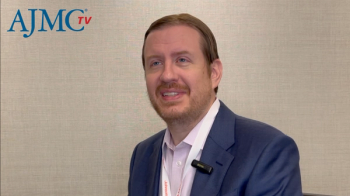
Fighting the Opioid Addiction Epidemic With Prescription Monitoring Programs
During the Pharmacy Quality Alliance's Annual Meeting, 2 speakers discussed opioid abuse and how to combat the growing epidemic through the use of a prescription monitoring program.
The Pharmacy Quality Alliance’s Annual Meeting has returned for yet another year and industry stakeholders came together to share ideas and research in the latest May meeting. Alex Adams, PharmD, MPH, executive director of the Idaho State Board of Pharmacy, and Matt Gagalis, vice president of business development at RxAnte, focused on the growing issue of opioid abuse and how to prevent it in their session, “Approaches to Address the Opioid Epidemic.”
The speakers noted a recent trend in the use of opioid medications, which has not gone unnoticed in the mainstream media. Gagalis pointed out that there were no less than at least 10 articles written on the subject in The New York Times since March 2016. RxAnte has looked at data on hundreds of thousands of lives and found that with the exponential increase in the use of opioids, there was a corresponding increase in the rate of unsafe use of the drug. By 2010, RxAnte’s research indicated that more than 70,000 kilograms of opioids were sold, upwards of 500,000 deaths due to an opioid overdose occurred, and just over 50,000 patients were admitted to the hospital for opioid-abuse treatment.
Gagalis and Adams came together to suggest several barriers to solving such an unsafe epidemic and pointed out that historically, all means of solutions focused on punitive measures. The key in addressing the situation is not a reaction measure but a preventive one, trying to get out in front of the problem and preventing it from happening, Gagalis said
“Doctors don’t feel overly prepared to deal with the underlying pain issues and are not comfortable addressing the substance abuse,” he said and added that traditional identification metrics are not necessarily the best ways to identify the problem, as physicians may often wait until the patient demonstrates unsafe use. And by that point, it’s too late—the patients are already addicted to the opioid medication and the situation becomes very costly.
The solution then becomes something of a balancing act, where the speakers explained that their end goal is to minimize the prescription drug abuse while simultaneously ensuring access for legitimate use.
Adams took the time to explain the PMP InterConnect method, also known as a prescription monitoring program, which enables greater transparency at the pharmacy level and promotes the sharing of information across state lines. Such a program is already established in 30 states and expected to be set up in 40 states by the end of the year.
“We’re getting to the point where states not in [the PMP] will be hard pressed to justify why they aren’t participating,” Adams said.
The system is composed of integrated data sharing in which a pharmacist can enter the prescription of a patient into the system and be aware of any red flags on the patient’s account.
Not only does the PMP allow a better exchange of information across state lines, but it also helps in detecting patients who seek several doctors in a short amount of time for the same medications, also more commonly known as patients who go “doc shopping.” Adams warned, however, that if a pharmacist is to deny a prescription, the subsequent report will not show up in the system until the next day, which hinders the real-time nature of the PMP.
Newsletter
Stay ahead of policy, cost, and value—subscribe to AJMC for expert insights at the intersection of clinical care and health economics.

















































